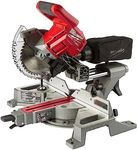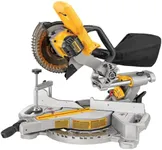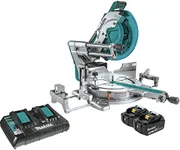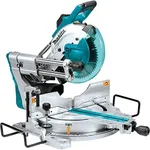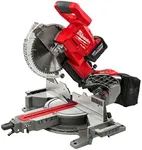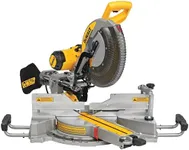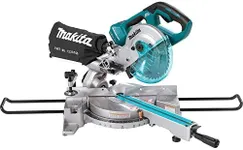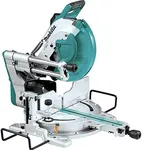Buying Guide for the Best Sliding Miter Saws
Choosing the right sliding miter saw can make a significant difference in the quality and efficiency of your woodworking projects. A sliding miter saw is a versatile tool that allows you to make precise crosscuts and miter cuts in a variety of materials. To find the best fit for your needs, it's important to understand the key specifications and how they impact the saw's performance. Here are the main specs to consider when selecting a sliding miter saw.Blade SizeThe blade size of a sliding miter saw determines the maximum depth and width of the cut it can make. Common blade sizes are 7-1/4 inches, 10 inches, and 12 inches. Smaller blades (7-1/4 inches) are suitable for lighter, more precise work, while larger blades (12 inches) can handle thicker and wider materials. Choose a blade size based on the type of projects you plan to undertake. For general home improvement tasks, a 10-inch blade is often sufficient.
Motor PowerMotor power, measured in amps, indicates the saw's ability to cut through different materials. Higher amp motors (15 amps) provide more power and can handle tougher materials like hardwoods, while lower amp motors (10-12 amps) are suitable for softer woods and lighter tasks. Consider the types of materials you will be cutting most frequently to determine the appropriate motor power for your needs.
Cutting CapacityCutting capacity refers to the maximum width and thickness of the material the saw can cut. This is influenced by the blade size and the sliding mechanism. A larger cutting capacity allows for more versatility in the types of cuts you can make. If you plan to work with larger pieces of wood or need to make wide crosscuts, look for a saw with a higher cutting capacity.
Bevel RangeThe bevel range indicates the angles at which the saw can tilt to make bevel cuts. A single bevel saw tilts in one direction, while a dual bevel saw tilts in both directions. Dual bevel saws offer more flexibility and convenience, especially for complex projects that require multiple bevel cuts. If you frequently need to make bevel cuts, a dual bevel saw may be the better choice.
Miter RangeThe miter range specifies the angles at which the saw can pivot to make miter cuts. A wider miter range allows for greater versatility in cutting angles. Most saws offer a miter range of 0 to 45 degrees, but some can go beyond that. Consider the types of miter cuts you need to make and choose a saw with a miter range that accommodates those angles.
Sliding MechanismThe sliding mechanism allows the saw blade to move forward and backward, increasing the cutting capacity. This feature is particularly useful for cutting wider boards. If you need to cut large pieces of wood or make long crosscuts, a sliding miter saw is essential. However, if you primarily work with smaller pieces, a non-sliding miter saw may suffice.
Dust CollectionDust collection is an important feature that helps keep your workspace clean and reduces airborne dust particles. Some saws come with built-in dust collection systems or ports for attaching a vacuum. Effective dust collection improves visibility and safety while working. If you value a clean workspace and want to minimize cleanup time, look for a saw with a good dust collection system.
PortabilityPortability refers to how easy it is to move and transport the saw. If you need to take your saw to different job sites or move it around your workshop, consider its weight and whether it has built-in handles or wheels. Lighter saws are easier to transport but may sacrifice some cutting capacity and power. Balance your need for portability with the saw's performance capabilities.




